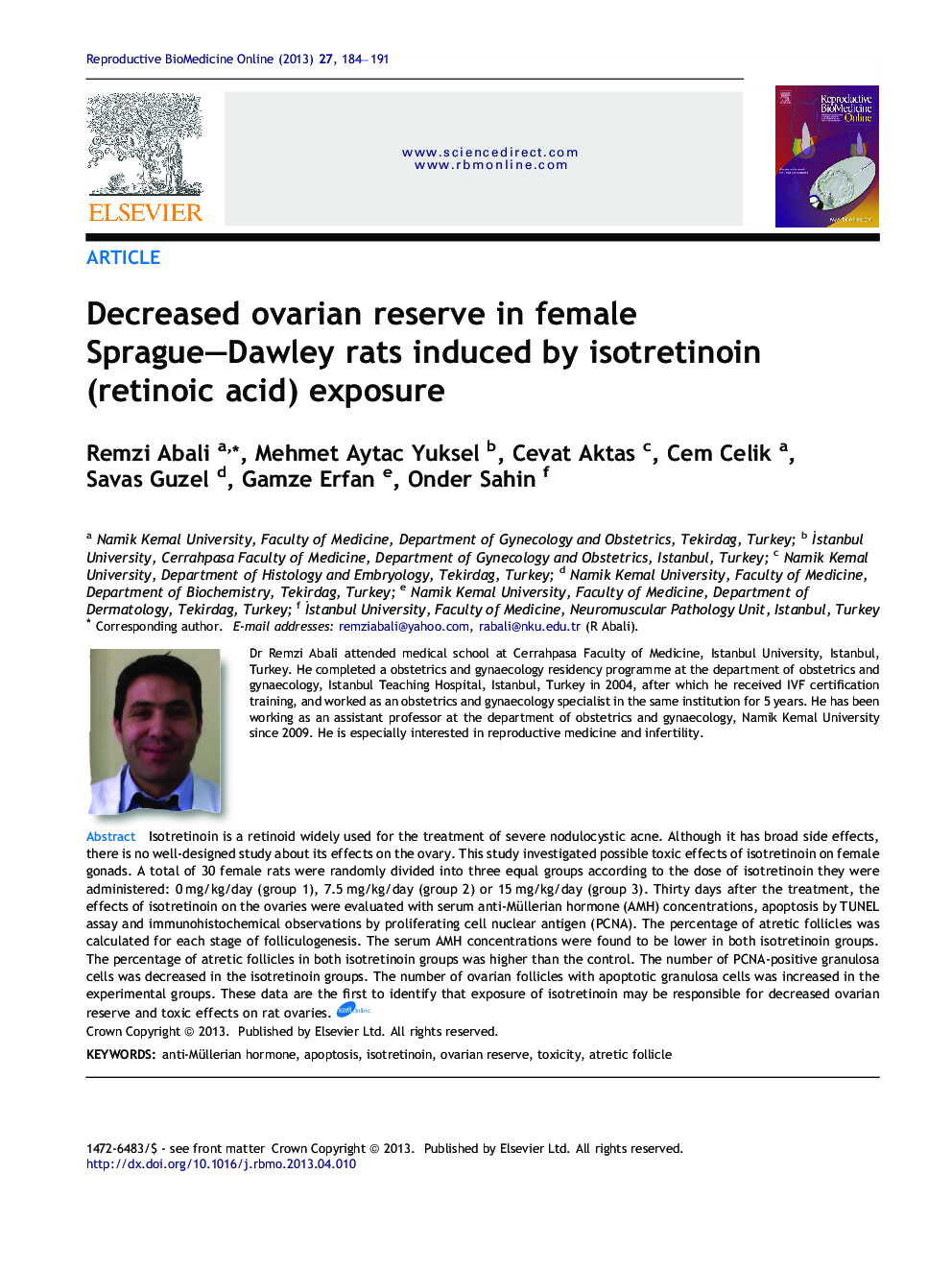| Article ID | Journal | Published Year | Pages | File Type |
|---|---|---|---|---|
| 3970315 | Reproductive BioMedicine Online | 2013 | 8 Pages |
Isotretinoin is a retinoid widely used for the treatment of severe nodulocystic acne. Although it has broad side effects, there is no well-designed study about its effects on the ovary. This study investigated possible toxic effects of isotretinoin on female gonads. A total of 30 female rats were randomly divided into three equal groups according to the dose of isotretinoin they were administered: 0 mg/kg/day (group 1), 7.5 mg/kg/day (group 2) or 15 mg/kg/day (group 3). Thirty days after the treatment, the effects of isotretinoin on the ovaries were evaluated with serum anti-Müllerian hormone (AMH) concentrations, apoptosis by TUNEL assay and immunohistochemical observations by proliferating cell nuclear antigen (PCNA). The percentage of atretic follicles was calculated for each stage of folliculogenesis. The serum AMH concentrations were found to be lower in both isotretinoin groups. The percentage of atretic follicles in both isotretinoin groups was higher than the control. The number of PCNA-positive granulosa cells was decreased in the isotretinoin groups. The number of ovarian follicles with apoptotic granulosa cells was increased in the experimental groups. These data are the first to identify that exposure of isotretinoin may be responsible for decreased ovarian reserve and toxic effects on rat ovaries.Isotretinoin (13-cis-retinoic acid) is a retinoid that is widely used for the treatment of severe acne. Although it has a broad side effects profile, no well-designed study about its effects on the ovary has been published. This study was designed to investigate possible toxic effects of isotretinoin on female gonads. A total of 30 female rats were divided into three equal groups according to the dose of isotretinoin to be administered: 0 mg/kg/day (group 1), 7.5 mg/kg/day (group 2) or 15 mg/kg/day (group 3). Thirty days after the treatment, ovarian effects of isotretinoin were evaluated with serum anti-Müllerian hormone (AMH) concentrations and immunohistochemical examination. The percentage of atretic follicles was calculated for each stage of folliculogenesis. The serum AMH concentrations were lower in both isotretinoin groups. The percentage of atretic follicles in both isotretinoin groups was higher than the control. The number of proliferating cell nuclear antigen-positive granulosa cells was decreased in the isotretinoin groups. The number of ovarian follicles with apoptotic granulosa cells was increased in the experimental groups. These data are the first to identify that exposure of isotretinoin may be responsible for decreased ovarian reserve and toxic effect on rat ovaries.
